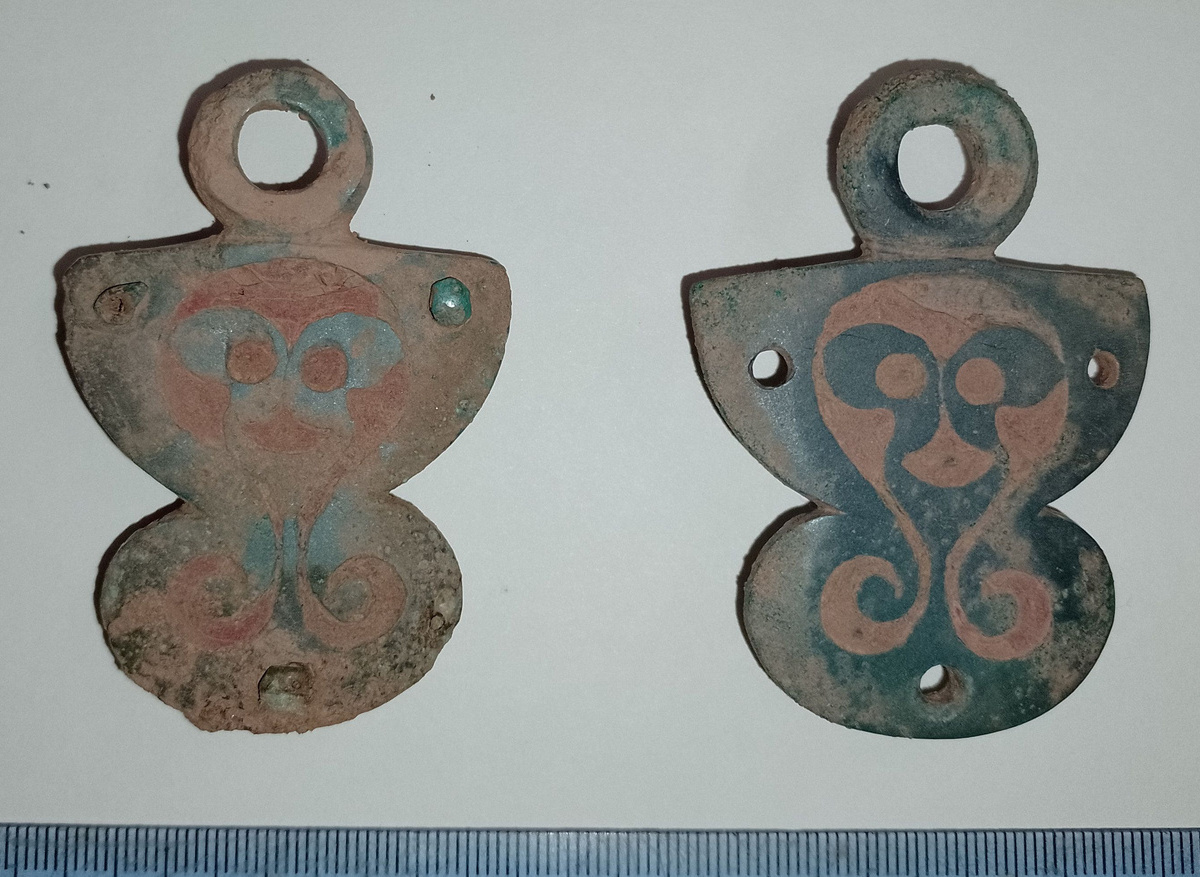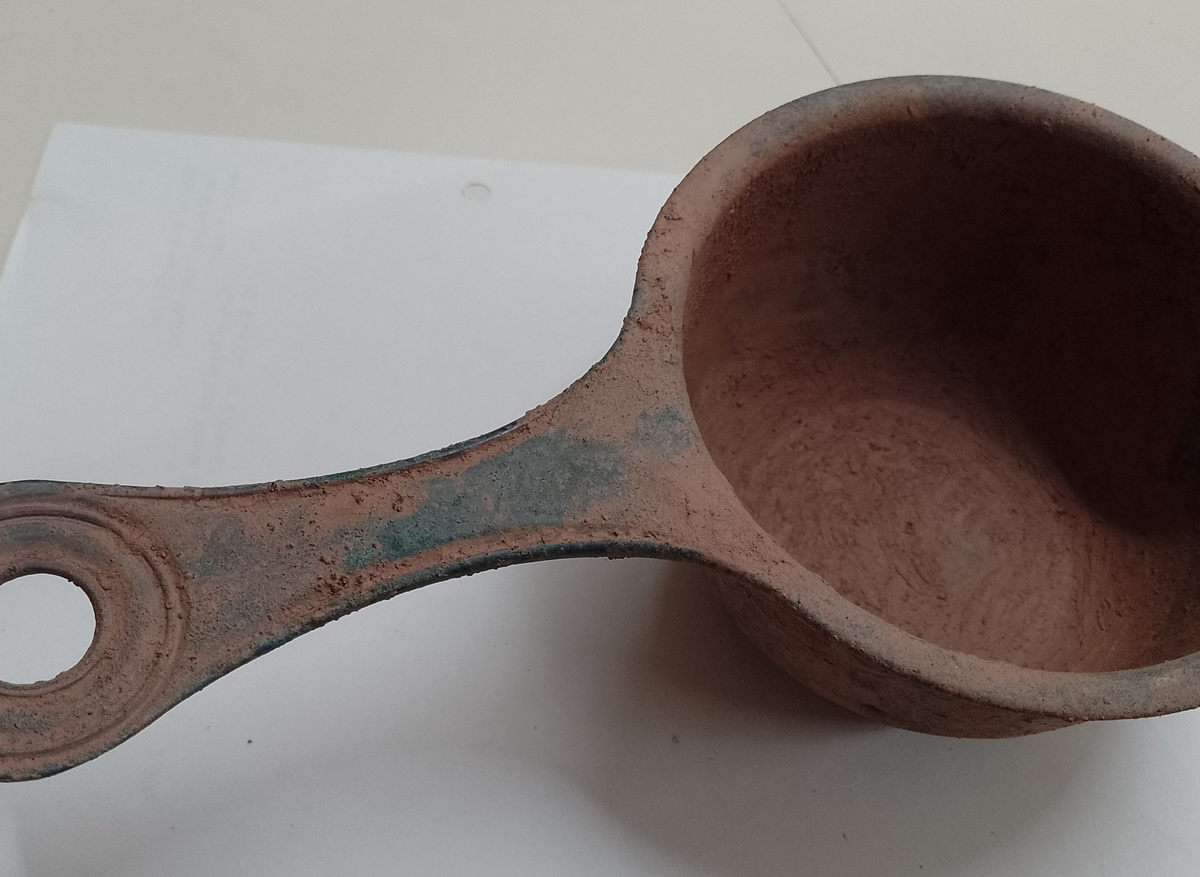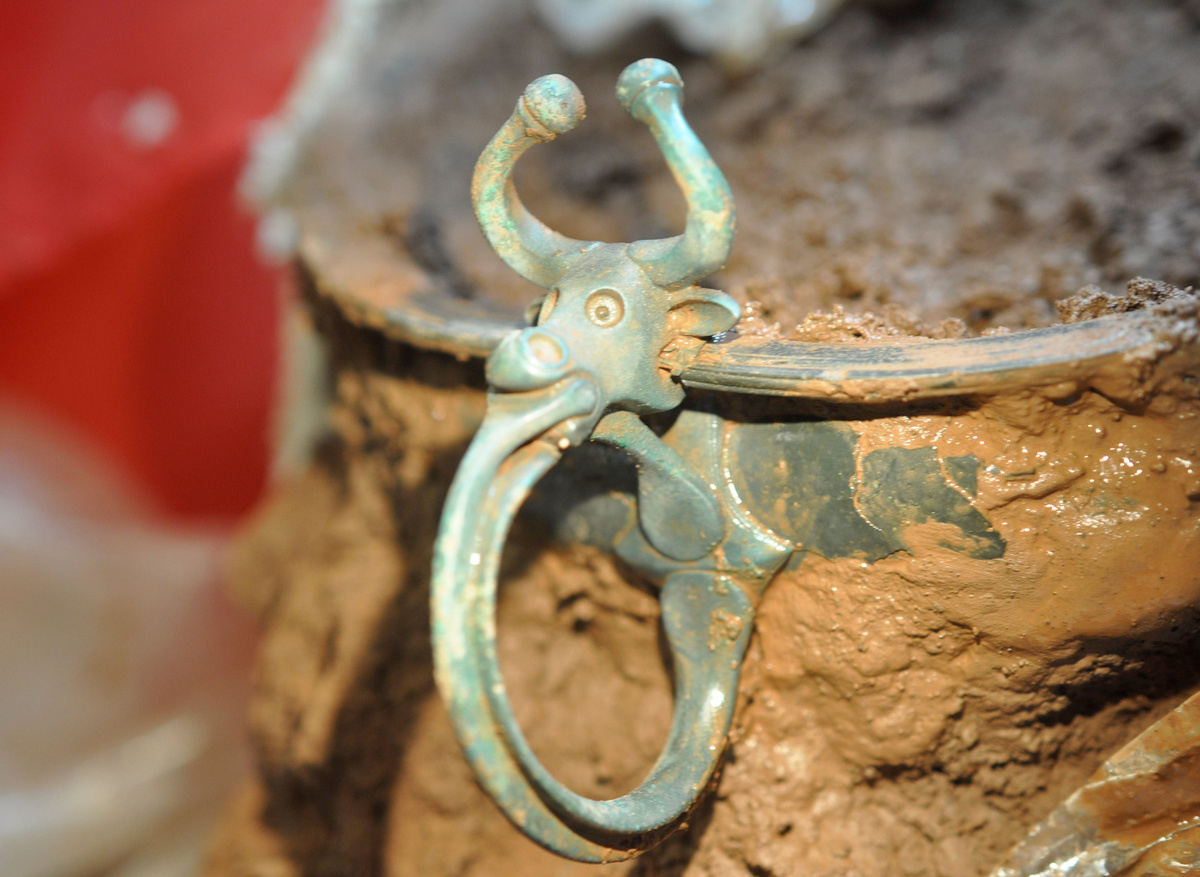Real treat today, I’m finally able to accession (formally add to the Museum’s collection) the hoard of late Iron Age and Roman vessels from Llantrisant Fawr.
A hoard of eight Iron Age and Roman vessels, two complete and six fragmentary. The remains of two stave-built wooden tankards and a bucket, with copper alloy fittings; a copper alloy bowl; cauldron; strainer; and saucepans (trullei) that were discovered by a metal detectorist and subsequent archaeological fieldwork. The vessels appear to have been buried as a group around the time of the Roman conquest, in the second half of the first century AD.
First reported to Amgueddfa Cymru - Museum Wales as a possible Treasure case, the hoard has now made its way through all the stages of the Treasure process and the museum has been able to find the money to acquire it for the national collection and preserve it for future generations to study and enjoy.
Every item (or group of items from the same source, e.g. finds from the same excavation) gets its own unique number to help identify it in the future. At Amgueddfa Cymru we use the fairly typical method of the year of acquisition plus numerical sequence for each year. As the museum covers a number of different subject areas, we also add a letter to denote the department accessioning the object. The Llantrisant Fawr Hoard thus becomes 2024.5H, the fifth group of objects acquired by Archaeology in 2024.
As there are eight objects in the hoard each now gets a unique additional number (sub-number). In this case the hoard already has a numbered listing of the objects in the report prepared for the Coroner as part of the Treasure process, so it makes sense to stick with the same order. Thus:
- the two Roman saucepans (trullei) become 2024.5H/1 and 2024.5H/2
- the Late Iron Age wooden vessel with copper alloy fittings becomes 2024.5H/3
- the wooden tankard with copper alloy fittings becomes 2024.5H/4
- the separate copper alloy tankard handle becomes 2024.5H/5
- the fragments of a copper alloy cauldron with wrought iron handle becomes 2024.5H/6
- the Late Iron Age copper alloy bowl with ox head ring mount becomes 2024.5H/7
- and the very fragmentary remains of a copper alloy strainer becomes 2024.5H/8
Normally the next stage would be to carefully box up the objects to keep them safe until there was an opportunity to get them on display. In this case things are a bit different as there has not yet been an opportunity to properly clean and conserve them. During the Treasure process conservation is limited to what is needed to establish the number and nature of the objects present, so that an accurate report can be provided to the coroner and the Treasure Valuation Committee can then fairly assess the value of the items. It is thus now a case of giving colleagues in conservation the green light to properly work on the items and fully reveal their splendour.




